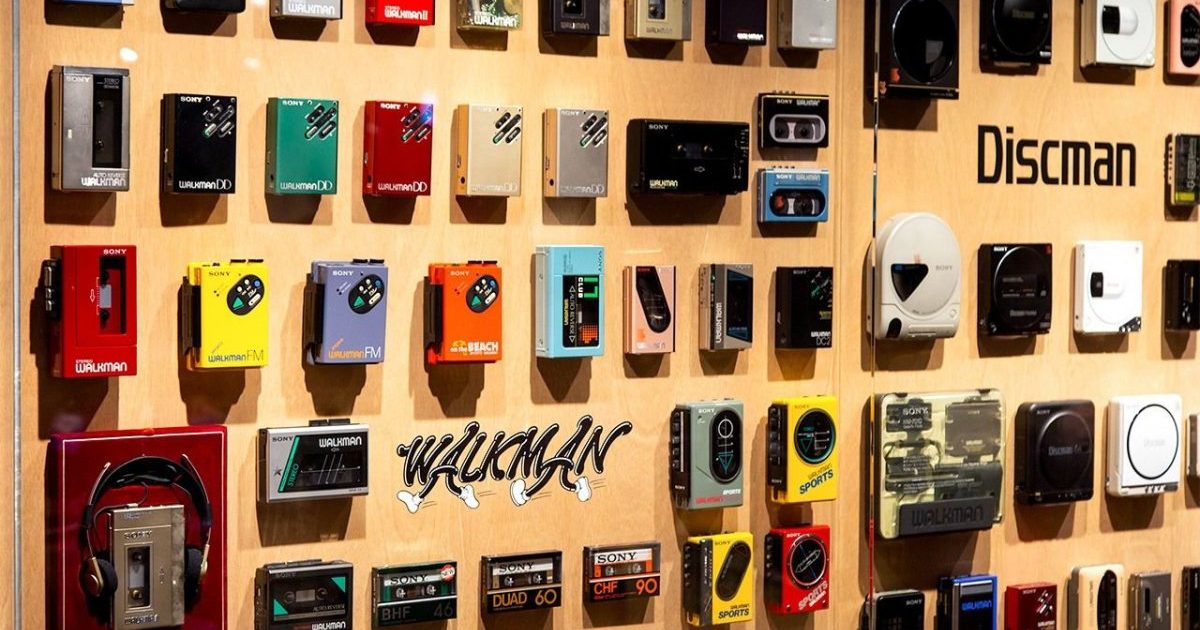“Is that your walkman? How modern that he is! ” Luis Alberto Spinetta is surprised before the new gadget of his partner Pedro Aznar. Later, he will be even more surprised when discover that “it has batteries!”while the bassist comments, in a surpassed tone, “everything is very liberal, one hundred percent free, listening to good music/ Very FM”.
These dialogues between the former Almendra and Serú Girán, respectively, they are part of “telephone wig”, the song that includes Charly and that is part of “Yendo de la cama al living”, his first solo album released in October 1982. Spinetta was right, it was very modern to have a walkman if you had only known him for three years. Even more so in Argentina at that time, with imports wide open, having one was not for everyone.
The Walkman was first a recorder
The first portable cassette player went on sale on July 1, 1979 and Sony, its manufacturer named it Walkman. Since then, every portable player, Sony or not, would be a Walkman. Its origin, as usually happens with all transcendent events in this world (and beyond), has more than one version, but, at least in this case, one single objective: listening to music while on the move (or not). Let’s see.
It is assumed that the future Walkman was the result of the desire of the then presidente honorario de Sony, Masaru Ibukato be able to have a device that would allow him to listen to music during his permanent plane trips around the world.
Another version holds that Masaru, apparently an inveterate athlete, had been thinking about a device that would allowed him to go running, his great passion, while he enjoyed listening to music. He began to devise a device for this, which he did not hesitate to show Akio Morita, his friend and founding partner of Sony, who saw impressive potential in the Masaru prototype, so he did not hesitate to send it to his engineering team so that they perfect the team.
However, it seems that something else happened. The head of the development team at Sony, Kuroki Yasuo, nicknamed Mr. Walkman, tells in his book Walkman-ryū kikaku-jutsu: “The Walkman was not a device designed from the beginning with the clear idea of turning it into a commercial item. It was something that was born as fun for young technicians and that It was never on the list of projected devices by the Recording Division. It was something that wasn’t in the script, so to speak, and that’s why the Walkman story is so funny.”
Advertisement for the first Walkman released for sale on July 1, 1979.
The walkman arose from altering the Pressman, the small portable recorder for journalists, therefore, as it is a reformulation of a device already invented and tested, its development phase lasted just four months. Even so, the term is exceptionally short for the time. What the engineers did was take away the recording device from the Pressman, add headphones and… play!
The evolution of the walkman
In February 1981, one year and seven months after the launch of the first Walkman, the famous Sony WM-2 was released, a more compact Walkman, with a size as close as possible to that of a cassette box, in addition to removing the buttons originally located on the side and relocating them to the face that functioned as the cover of the Walkman. This second generation of the Walkman achieved great success outside of Japan for the first time. The WM-2, which ran on just a couple of AA batteriesIt was the version that has remained most etched in people’s memories and it was surely the one that would “surprise” Spinetta so much in the hilarious lyrics of “Peluca telefónica”.
The Walkman immediately connected with the youthwho saw in the new technology the possibility of listening to music outdoors.
Incredible as it may seem today, the Walkman didn’t have an immediate impact on sales, but it didn’t take that long to do so either. Initially Only about 3,000 units were sold., which wasn’t enough to make up for the relatively low retail price. Sony reacted quickly and generated a marketing campaign as original as the product it had created: it sent its employees to the streets to will use Walkmans in public and offer people the headphones as a stereo listening experience outside their homes, and of course it worked.
The Walkman forever changed the way you listen to music: the social fact of getting together to play records became an individual gesture of playing the cassette and walking around with headphones on their temples. Although it was discontinued in 2010, music continues to travel with us.
